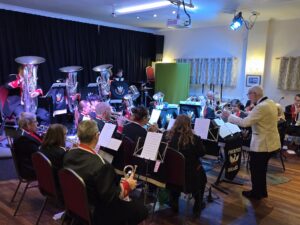
Rubbing houses were a fairly common feature on racecourses from the C18 if not earlier, and were erected for the specific purpose of removing sweat, dirt and dust from horses between heats and to also keep them warm under cover to avoid a chill. The buildings were simple single story structures comprising of a single space.
The intervals required for rubbing down and resting the two or three competing horses between heats meant that a single race provided a whole afternoon’s sport. During this period sweating was considered beneficial for horses, so they would also be exercised in rugs and then brought to the rubbing house where they were rubbed down and dried off.
When Charles II established the Town Plate, a race on Newmarket Heath in Suffolk in 1665 a set of written articles, the earliest national racing rules, were produced which were to be observed by all persons entering horses in the race. One of the rules relates specifically to rubbing down horses and states that ‘it is allowed for any horse to be relieved at the discretion of the owner at the end of each heat, and every horse shall have half an hour’s time to rub between each heat.’
Rubbing houses were therefore a fairly necessary part of racing and were not only built at racecourses, but also at some training establishments. As the form of racing began to change from races for two or three horses run over several heats to single-run races with larger fields of runners, so too did the rubbing house. Rubbing houses appear to have gone out of fashion by the end of the C19.
The rubbing house above Weathercock Hill stems from the days when Lord Craven was training and racing horses near Ashdown Park. There is a somewhat dark WWII spy incident known as the Cullinan incident which features the Rubbing House.


The remains of the Rubbing House above Weathercock Hill, Lambourn
An example of a well preserved rubbing house is the one on Salisbury racecourse which has been given listed building status. More details HERE





